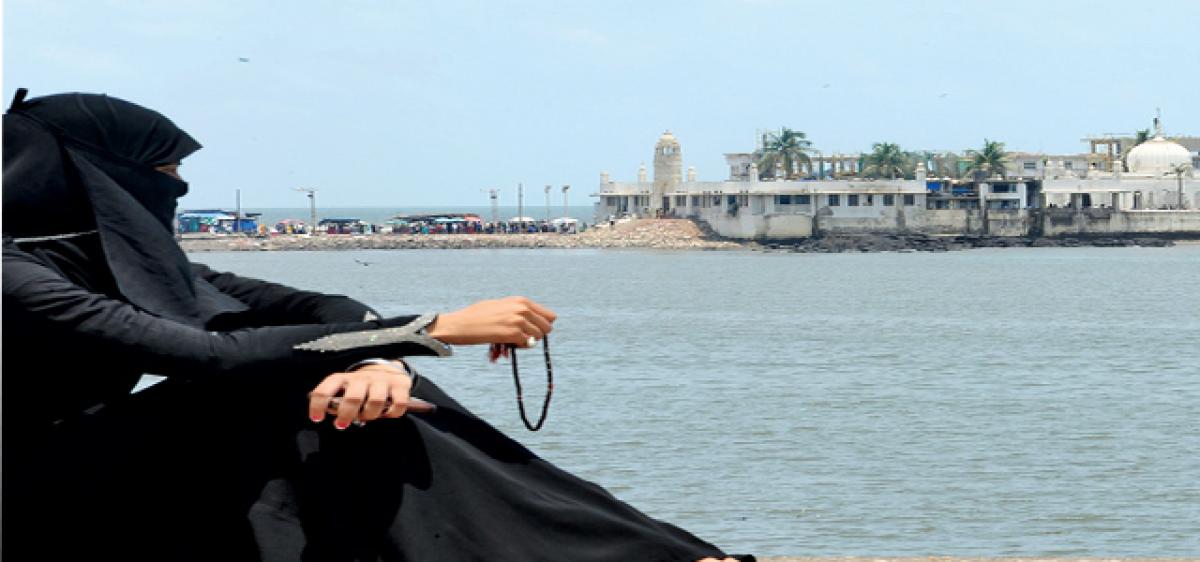Live
- BJP urges EC to stop Cong’s ‘Guarantee Cards’ campaign aimed to 'induce voters'
- Congress cheated Madigas: Dr. RS Praveen Kumar
- CBDT signs record 125 pacts to ease tax payments by big multinational firms
- Kamal Nath accuses BJP of ‘threatening’ Congress leaders in Chhindwara
- Odisha: BJP, BJD allege violation of MCC
- PM Modi lands in Guwahati to kickstart poll campaign
- ‘100 day action plan’ is PM Modi’s signature style for setting goals and meeting targets
- BJP will change the Constitution if they come to power again, says Priyanka Gandhi
- BJP-led NDA to cross 390-mark in Lok Sabha polls, predicts India TV-CNX survey
- Haier launches new TV series in four sizes in India
Just In

The Supreme Court verdict on October 24, upholding the Bombay HC order allowing women’s entry into the sanctum sanctorum of the Haji Ali shrine in Mumbai is a trailblazing victory for women.
The Supreme Court verdict on October 24, upholding the Bombay HC order allowing women’s entry into the sanctum sanctorum of the Haji Ali shrine in Mumbai is a trailblazing victory for women.
Dealing a severe blow to misogynistic elements at places of worship, it is axiomatic that it boosted women's rights movement. The momentum of the movement shall not be lost till gender bias is eliminated at all religious places in India.
A PIL on the entry of women into the Sabarimala temple is being heard by the SC. The apex court rightly observed all practices are acceptable till there is no distinction between genders.
The Constitution assures women equal rights and parity. Article 14 ensures gender equality. Article 15 prohibits discrimination on grounds of sex. Article 16 provides for equality of opportunity in public employment. Article 39 calls for adequate means of livelihood to both men and women.
Article 51 A (e) makes it a duty of every citizen to renounce practices derogatory to the dignity of women. It’s time Indians studied how these are being implemented by their governments.
India declared 2001 as the Year of Women Empowerment. Even so, women, who constitute 48% of population, lag behind men on almost all social indicators. National Family Health Survey shows 56% of 115 million adolescent girls are anaemic.
The state of pregnant mothers is equally dismal. According to Registrar General of India, maternal mortality declined from 212 per 1,00,000 live births in the period 2007-09 to 167 per 1,00,000 live births in the period 2011-13. India is, nevertheless, witnessing around 44,000 maternal deaths every year.
These issues and more like dowry deaths, facilities for women at work places, public toilets, smokeless chullas, women’s hostels etc., will not form priorities for political parties, unless there is a public outcry.
Even 69 years after Independence, our society is still smug about women’s deprivation and ill-treatment. An instance is the ongoing debate on triple talaq, which is arbitrary and unilateral, taking religious and partisan tones.
The most powerful nation, US, seems all set to break glass ceiling to elect a women president. In contrast, in India there isn’t even a faint demand for women's reservation in legislatures. The Constitution (108th Amendment) Bill, passed in 2010 by Rajya Sabha, is gathering dust in Lok Sabha.
India adopted gender-responsive budgeting in 2005. Alas, 11 years later, the Central budget pegs spending on women at just 4.5%, a decline from 5% a decade ago, points out IndiaSpend.
At present, India's share of women's contribution to GDP is 17 per cent as against the global average of 37 per cent.
ILO believes India can work to enhance it. A McKinsey study says if India strives for gender parity, it could add $700 billion to GDP by 2025.
GDP can go up by 1.4 percentage points. For this, governments at Centre and in States should work in tandem to improve the lot of women, and usher in a transformative change in deep-rooted mindsets about the role of women both at home and work.
The current movement for equality before the god should spawn campaigns to put pressure on the governments.

© 2024 Hyderabad Media House Limited/The Hans India. All rights reserved. Powered by hocalwire.com







